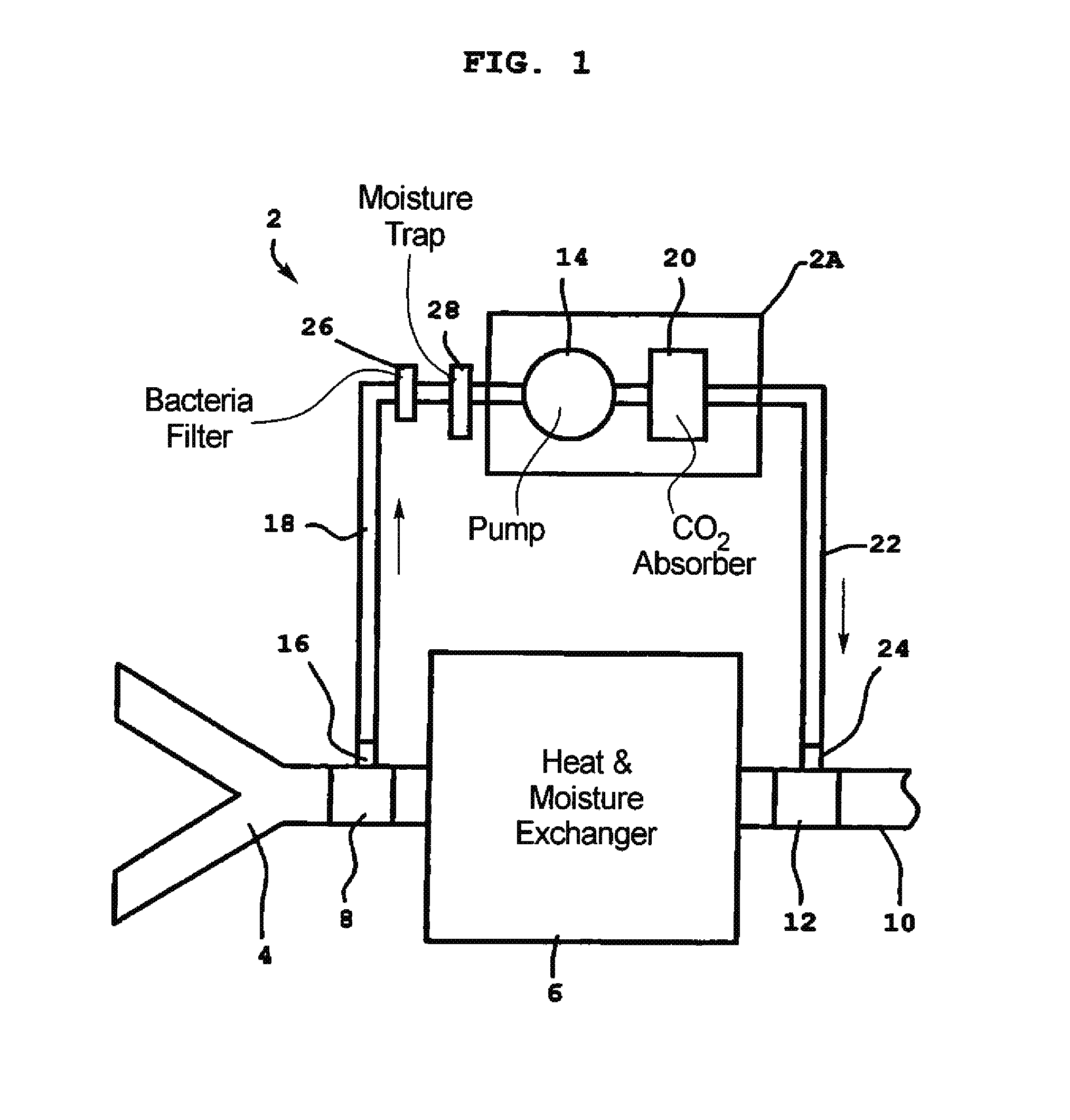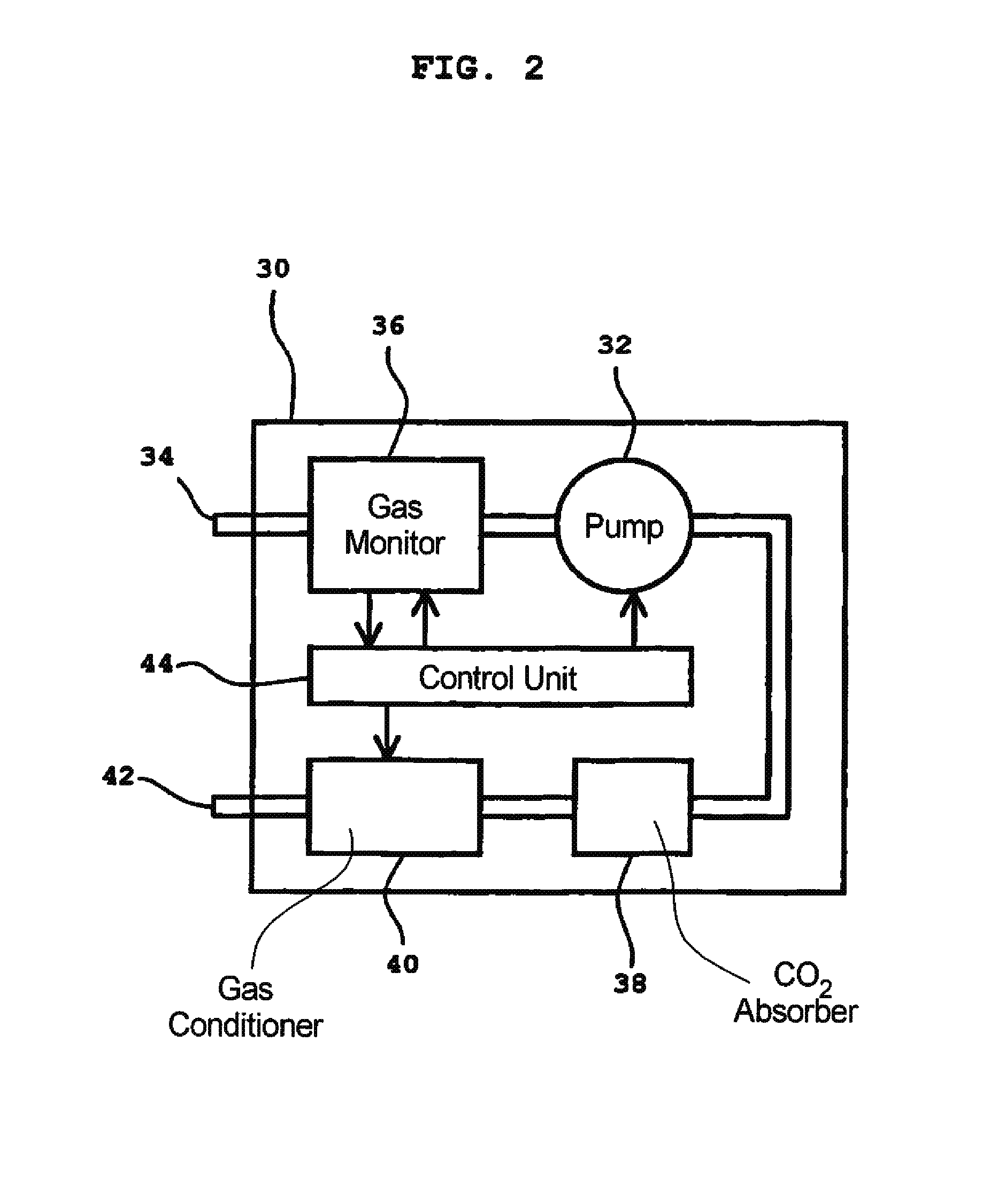Method and device for reducing the carbon dioxide content in a dead volume
a carbon dioxide and dead volume technology, applied in the field of methods for reducing dead volumes, can solve the problems of significant low pressure and limitations in the volume which can be evacuated, and achieve the effect of simple, effective and safe anesthesia
- Summary
- Abstract
- Description
- Claims
- Application Information
AI Technical Summary
Benefits of technology
Problems solved by technology
Method used
Image
Examples
first embodiment
[0030]In FIG. 1 a device 2 according to the invention is shown. The device 2 is coupled between a y-piece 4 via a first adapter 8 and a moisture and heat exchanger 6 and a patient connection 10 via a second adaptor 12.
[0031]The y-piece 4 is connected to a ventilator (not shown) or another conventional respiratory apparatus with separate flow passages for inspiration and expiration. Since such apparatuses are well known and the invention is not principally directed to functions or designs for them, they do not need to be described in this context.
[0032]It can be noted that the Y-piece 4 in this regard represents all known connections for respiratory apparatuses, for example coaxial connections such as Bain-system, etc.
[0033]The patient connection 10 can be any conventional patent connection, for example, tracheal tube, tracheotomy tube, tracheostomy tube, or a non-invasive face mask. These components are also well known and do not need to be described further in this context.
[0034]Th...
second embodiment
[0052]In FIG. 2 a device 30 according to the invention is shown. The device 30 in this case consists of a pump 32 which sucks gas from a first connection 34, which is connectable to a dead volume (not shown). The device 30 further contains a gas monitor 36 for qualitative and / or quantitative analysis of the gas, a CO2 absorber 38, a gas conditioner 40, a second connection 42 (connectable to the dead volume) and a control unit 44.
[0053]In the device 30 the gas that is suctioned out of the dead volume is analyzed. The analysis can be directed to one or many of the components in the gas, for example carbon dioxide, oxygen or a trace gas. The measured result is transferred to the control unit 44.
[0054]The control unit 44 can control the pump 14, the gas conditioner 40 and the gas monitor 36. By measuring the carbon dioxide content in the gas, the pump's 32 sucking effect can be regulated based on the carbon dioxide concentration, that is, essentially synchronized with expirations. The p...
PUM
 Login to View More
Login to View More Abstract
Description
Claims
Application Information
 Login to View More
Login to View More - R&D
- Intellectual Property
- Life Sciences
- Materials
- Tech Scout
- Unparalleled Data Quality
- Higher Quality Content
- 60% Fewer Hallucinations
Browse by: Latest US Patents, China's latest patents, Technical Efficacy Thesaurus, Application Domain, Technology Topic, Popular Technical Reports.
© 2025 PatSnap. All rights reserved.Legal|Privacy policy|Modern Slavery Act Transparency Statement|Sitemap|About US| Contact US: help@patsnap.com



